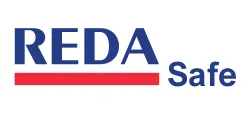Choosing Appropriate Women's PPE: Ensuring Safety for Head, Eyes, and Ears

Introduction
Despite the fact that women constitute over half of the American workforce, a significant portion of personal protective equipment (PPE) remains tailored mainly for men's sizes. This mismatch can lead to increased workplace hazards for women, as PPE that does not fit correctly may not only fail to protect properly but could also introduce new risks.
In this article, we will offer detailed guidance on choosing appropriate head, eye, and ear protection specifically designed for women, ensuring safety and comfort on the job.
Head Safety
Hard hats are essential for protecting against head trauma from impacts, punctures, or electrical hazards. Women often have a smaller head size than men, which can pose challenges in finding hard hats with the right fit due to smaller suspension systems. A solution for some has been the use of chin-straps for a better fit, yet the key is acquiring hard hats that are the correct size from the start.
Here’s what to look for in hard hats:
- Ensure it provides protection against specific risks at your job site.
- The headband must be snug and secure.
- Look for an adjustable chin-strap for a better fit.
- The hard hat should not be overly heavy.
- It should remain stable even when wearing other PPE like earmuffs.
For safe usage and upkeep, remember to:
- Regularly clean the suspension and shell with gentle soap, a sponge, and water.
- Inspect for any signs of damage like cracks or dents before use.
- Avoid wearing hard hats backwards unless they are certified for such use.
- Replace the hard hat shell every five years and the suspension system once a year.
Eye Safety
Safety glasses and goggles are vital for shielding eyes from flying debris, dust, and potential irritants that can cause injury or illness. Additionally, certain roles may require eyewear to protect against intense light. However, the common "one size fits all" approach to safety eyewear often results in pieces too large for many women, leaving them vulnerable to hazardous substances.
To choose the right safety goggles, ensure they:
- Offer protection from workplace hazards.
- Have side shields that don’t hinder side vision.
- Fit snugly and comfortably on the face.
- Stay in place without sliding or leaving gaps.
- Include an adjustable strap for certain eyewear models.
For safe usage and care:
- Store goggles in a designated case to avoid damage when not in use.
- Check the lenses for any damage like cracks or scratches every day.
- Clean the lenses regularly as per the guidelines provided by the manufacturer.
- Replace the goggles promptly if they are scratched, cracked, or otherwise compromised.
Ear Safety
Hearing protection comes in two main forms: earplugs and earmuffs. Earmuffs are convenient for those who frequently enter or exit noisy areas, while earplugs are more suitable for hot, damp, or tight spaces. Many women, having smaller ear canals, find pre-molded earplugs uncomfortable and often opt for disposable foam earplugs that adapt to the ear for a more comfortable experience.
To ensure you select the right hearing protection, consider the following:
- Comfort for all-day wear.
- Sufficient noise reduction for your specific workplace.
- A secure seal inside the ear canal for earplugs.
- A proper seal against the head and an appropriately tight headband for earmuffs.
Safe usage and maintenance tips include:
- Regular inspection for damage.
- Clean hands before fitting earplugs.
- Prompt replacement of any worn or damaged hearing protection.
- Single-use disposal of earplugs after use.
- Biannual replacement of reusable earplugs.
- Annual replacement of earmuffs.
- Adherence to the manufacturer’s instructions for care and storage.
One Size Does Not Fit All
Every worker deserves access to safety equipment that fits well and offers maximum protection. It's essential to communicate with your supplier about the need for personal protective equipment (PPE) that accommodates the women in your team. Settling for ill-fitting gear isn't an option. With increased awareness and a proactive approach, you can ensure that every member of your workforce is adequately protected. Take the time to assess the specific needs of your employees and insist on PPE that meets those requirements, thus fostering a safer and more inclusive workplace.
Conclusion
To sum up, it's clear that the standard "one size fits all" does not hold true when it comes to personal protective equipment (PPE) for women in the workforce. This comprehensive guide has underscored the importance of selecting head, eye, and ear protection that fits the unique needs of women, ensuring both safety and comfort. The responsibility lies with employers to not only provide PPE that meets safety standards but also fits the diverse body types within their teams. By doing so, they are not only complying with safety regulations but are also showing a commitment to their employees' well-being. It's time to shift towards a more individualized approach to PPE—one that acknowledges the differences in size and fit requirements—thereby enhancing the protection for all workers and reinforcing a culture of safety in the workplace.
